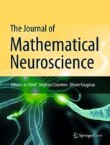Not applicable
Network Symmetry and Binocular Rivalry Experiments
Hugh Wilson has proposed a class of models that treat higher-level decision making as a competition between patterns coded as levels of a set of attributes in an appropriately defined network (Cortical Mechani...
